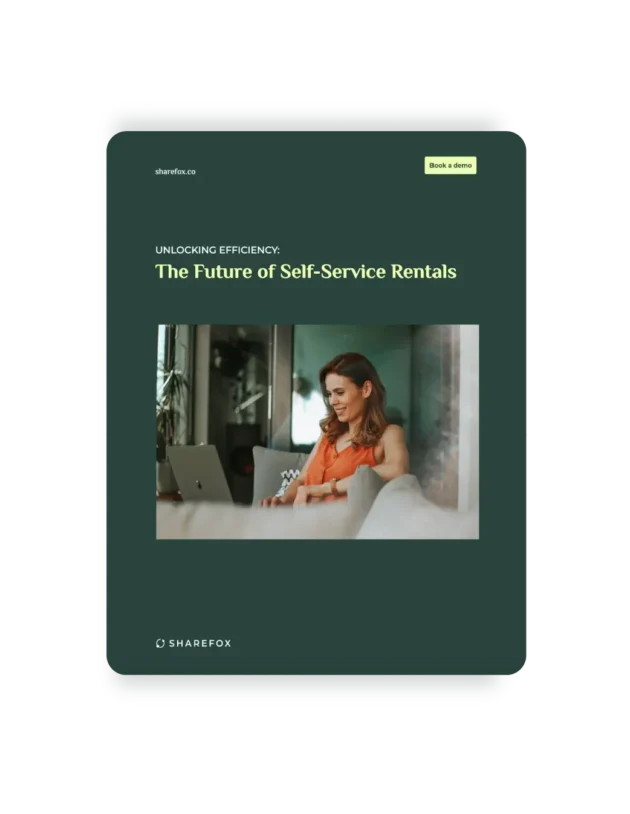
The rental equipment market is forecasted for significant growth, as highlighted by the latest projections. This growth is driven by several key factors including increased demand for flexibility, cost-effectiveness, and sustainability in various industries. The American Rental Association (ARA) has reported a steady rise in equipment rentals, driven by the economic benefits and operational efficiency that renting provides over purchasing equipment outright.
One of the prominent drivers of this trend is the construction sector, which frequently requires specialized machinery for specific projects. Renting allows construction companies to access the latest technology without the substantial capital expenditure associated with buying new equipment. Furthermore, as construction projects can vary greatly in size and duration, renting provides the necessary flexibility to scale up or down as needed.
Moreover, technological advancements in rental management software have streamlined the rental process. Platforms such as Sharefox offer comprehensive solutions that enhance the rental experience for both providers and customers. By integrating tools for inventory management, booking systems, and customer communications, Sharefox enables rental businesses to operate more efficiently and attract a broader customer base .
In addition to construction, other industries such as events, landscaping, and logistics are also contributing to the growth of the rental equipment market. The events industry, for instance, relies heavily on renting specialized equipment for temporary use. This includes audio-visual equipment, stages, and seating arrangements, which are critical for the success of large-scale events. Similarly, the landscaping industry benefits from renting high-cost machinery that is not used year-round.
Overall, the rental equipment market is poised for robust growth, supported by the diverse needs of various sectors and the continuous advancements in rental software solutions. Companies leveraging these trends are likely to gain a competitive edge by offering enhanced services and operational efficiency to their clients .
Technological Advancements in Rental Management Software
The evolution of rental management software has been a game-changer for the equipment rental industry. Modern rental software platforms like Sharefox have revolutionized the way rental businesses operate, providing tools that simplify and optimize every aspect of the rental process.
One of the key features of advanced rental software is its ability to manage inventory efficiently. For instance, Sharefox’s inventory management system allows businesses to keep track of their assets in real time, reducing the risk of overbooking and ensuring that equipment is available when needed. This system not only enhances operational efficiency but also improves customer satisfaction by providing reliable and timely service .
Another critical feature is the integration of booking systems that allow customers to reserve equipment online. This functionality is essential in today’s digital age, where convenience and accessibility are paramount. Online booking systems reduce the administrative burden on rental businesses and provide customers with a seamless experience, from browsing available equipment to making reservations and payments.
Furthermore, rental management software often includes tools for customer relationship management (CRM). These tools help businesses keep track of customer interactions, preferences, and history, enabling personalized service and targeted marketing efforts. By understanding their customers better, rental businesses can improve retention rates and foster long-term relationships .
Additionally, the automation capabilities of rental software play a significant role in reducing manual tasks and increasing efficiency. For example, automated invoicing and payment processing save time and reduce errors, allowing businesses to focus on growth and customer service. Sharefox, for instance, offers a robust invoicing module that integrates with various accounting systems, streamlining financial management for rental businesses .
In conclusion, the advancements in rental management software are driving the growth and success of the equipment rental industry. By adopting these technologies, rental businesses can enhance their operations, improve customer satisfaction, and stay competitive in a rapidly evolving market .
Sustainability and the Circular Economy in Equipment Rentals
Sustainability has become a significant focus in the equipment rental industry, aligning with the broader shift towards a circular economy. The concept of the circular economy emphasizes reducing waste, reusing resources, and recycling materials to create a sustainable and resilient economy.
Renting equipment inherently supports this model by maximizing the utilization of assets. Instead of each business purchasing its equipment, which may be underutilized, rental companies can keep their equipment in constant use across multiple clients. This approach not only reduces the demand for new equipment but also minimizes the environmental impact associated with manufacturing and disposing of machinery .
Rental companies are also adopting sustainable practices by maintaining and refurbishing equipment to extend its lifespan. This proactive approach to equipment management ensures that machinery remains in good working condition for longer, reducing the need for replacements and conserving resources. Furthermore, some rental companies are investing in more energy-efficient and eco-friendly equipment, which not only meets the growing demand for green solutions but also sets a positive example for other industries.
Sharefox supports the circular economy by providing rental software that facilitates the efficient management and utilization of rental equipment. Their platform includes features that help businesses track the usage and maintenance of their equipment, ensuring that it remains in optimal condition and available for rental as needed. This system not only enhances operational efficiency but also aligns with sustainable business practices .
Moreover, the shift towards a circular economy is being driven by changing consumer preferences. More customers are recognizing the environmental benefits of renting over owning, and they are increasingly seeking out companies that prioritize sustainability. This trend is particularly evident among younger consumers, who are more likely to support businesses that align with their values.
In summary, the equipment rental industry is playing a crucial role in promoting sustainability and supporting the circular economy. By adopting sustainable practices and leveraging advanced rental management software, rental businesses can meet the growing demand for environmentally responsible solutions and contribute to a more sustainable future .
Impact of Economic Factors on Equipment Rentals
Economic factors play a significant role in the equipment rental industry, influencing both demand and supply. One of the primary economic drivers is the cost-saving potential of renting versus buying equipment. In uncertain economic times, businesses often prefer renting to avoid the significant upfront costs associated with purchasing new equipment. This trend has been particularly evident during economic downturns, where companies seek to minimize expenses and maintain financial flexibility.
The rental market also benefits from the ongoing need for operational efficiency. Renting equipment allows businesses to access the latest technology without the burden of ownership costs such as maintenance, storage, and depreciation. This is especially relevant in industries like construction and events, where equipment needs can vary significantly from project to project .
Inflation and interest rates are additional economic factors that impact the rental market. High inflation can increase the cost of new equipment, making renting a more attractive option for businesses looking to control expenses. Conversely, low interest rates can make financing purchases more affordable, potentially reducing the demand for rentals. However, the flexibility and scalability offered by renting often outweigh the benefits of ownership, particularly in volatile economic conditions.
Government policies and infrastructure investments also play a crucial role in shaping the rental market. For instance, large-scale infrastructure projects can drive demand for rental equipment, as companies need specialized machinery for the duration of these projects. Additionally, government incentives for green initiatives can boost the demand for energy-efficient rental equipment, aligning with broader sustainability goals .
The global supply chain disruptions witnessed during recent years have further highlighted the advantages of renting. With supply chain issues causing delays and shortages in new equipment, renting provides a viable alternative for businesses to meet their immediate needs without waiting for long lead times. This flexibility is critical in maintaining project timelines and avoiding costly delays.
In conclusion, economic factors significantly influence the equipment rental industry, affecting both demand and supply dynamics. By understanding these factors and leveraging advanced rental management solutions, businesses can navigate economic uncertainties and optimize their operations effectively .
Future Outlook and Opportunities in Equipment Rentals
The future of the equipment rental industry looks promising, with several trends and opportunities poised to drive growth. One of the key opportunities lies in the integration of digital technologies and the Internet of Things (IoT). IoT-enabled equipment can provide real-time data on usage, location, and maintenance needs, enhancing the efficiency and reliability of rental operations.
The adoption of IoT technology in rental equipment can lead to significant improvements in asset management. For example, GPS tracking can help rental companies monitor the location of their equipment, reducing the risk of theft and improving logistics. Additionally, sensors can provide data on equipment performance and maintenance needs, allowing for predictive maintenance and reducing downtime. These advancements not only enhance operational efficiency but also improve customer satisfaction by ensuring the availability and reliability of rental equipment .
Another growth area is the expansion of rental services into new markets and sectors. While construction and events have traditionally been the mainstays of the rental industry, there is increasing demand for rental solutions in sectors such as agriculture, healthcare, and retail. For instance, the healthcare industry is seeing a rise in the rental of medical equipment, driven by the need for flexibility and cost control. Similarly, the retail sector is exploring rental models for products like electronics and furniture, catering to the growing trend of consumption based on usage rather than ownership .
Sustainability will continue to be a significant driver of growth in the rental industry. As businesses and consumers become more environmentally conscious, the demand for rental solutions that support the circular economy will increase. Rental companies that prioritize sustainability by offering energy-efficient equipment and adopting green practices will be well-positioned to capture this growing market.
Furthermore, the rise of the sharing economy and the increasing acceptance of rental models among consumers present substantial opportunities. Platforms like Sharefox facilitate the sharing and renting of goods and services, making it easier for businesses to enter the rental market and reach a broader audience. By leveraging these platforms, rental companies can enhance their visibility, streamline operations, and attract more customers .
In summary, the equipment rental industry is set for continued growth and transformation, driven by technological advancements, expanding markets, and a focus on sustainability. Companies that embrace these trends and leverage advanced rental management solutions will be well-position
FAQ:
- What factors are driving the growth of the equipment rental market in 2024?
- Technological advancements, sustainability efforts, and economic factors are the primary drivers of growth in the equipment rental market.
- How is IoT technology influencing the equipment rental industry?
- IoT technology provides real-time data on equipment usage and maintenance, enhancing operational efficiency and reliability.
- Which industries are seeing increased demand for rental equipment?
- Besides construction and events, agriculture, healthcare, and retail are experiencing increased demand for rental equipment.
- Why is sustainability important in the equipment rental market?
- Sustainability reduces waste and promotes the efficient use of resources, aligning with the circular economy and increasing customer demand for green solutions.
- How does rental management software improve business operations?
- Rental management software streamlines processes, manages inventory, and enhances customer experience, leading to greater efficiency and satisfaction.
- What are the benefits of renting over buying equipment?
- Renting offers cost savings, flexibility, access to the latest technology, and reduced maintenance and storage costs.

